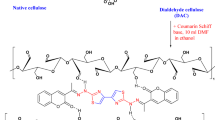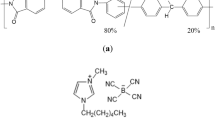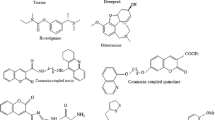Abstract
BY sorption on ion exchange resins1–3 it is possible to separate some coumarins in dilute solution. A column of the strongly basic anion exchange resin, ‘Amberlite IRA–400’ (−40, +60 mesh; Rohm and Haas Co.), in the chloride form (bed length, 50 cm; bed volume, 25.8 c.c.) has been used for this purpose.
This is a preview of subscription content, access via your institution
Access options
Subscribe to this journal
Receive 51 print issues and online access
$199.00 per year
only $3.90 per issue
Buy this article
- Purchase on SpringerLink
- Instant access to full article PDF
Prices may be subject to local taxes which are calculated during checkout
Similar content being viewed by others
References
Wheaton, R. M., and Bauman, W. C., Ann. N.Y. Acad. Sci., 57, 159 (1953).
Skelly, N. E., Anal. Chem., 33, 271 (1961).
Patel, D. J., and Bafna, S. L., Ind. Eng. Chem. (Product Research and Development), 4, 1 (1965).
Shah, R. S., and Bafna, S. L., Ind. J. Chem., 1, 400 (1963).
Author information
Authors and Affiliations
Rights and permissions
About this article
Cite this article
SHAH, R., BAFNA, S. Separation of Coumarins. Nature 208, 76 (1965). https://doi.org/10.1038/208076a0
Published:
Issue date:
DOI: https://doi.org/10.1038/208076a0
This article is cited by
-
Separation of Coumarins
Nature (1966)



